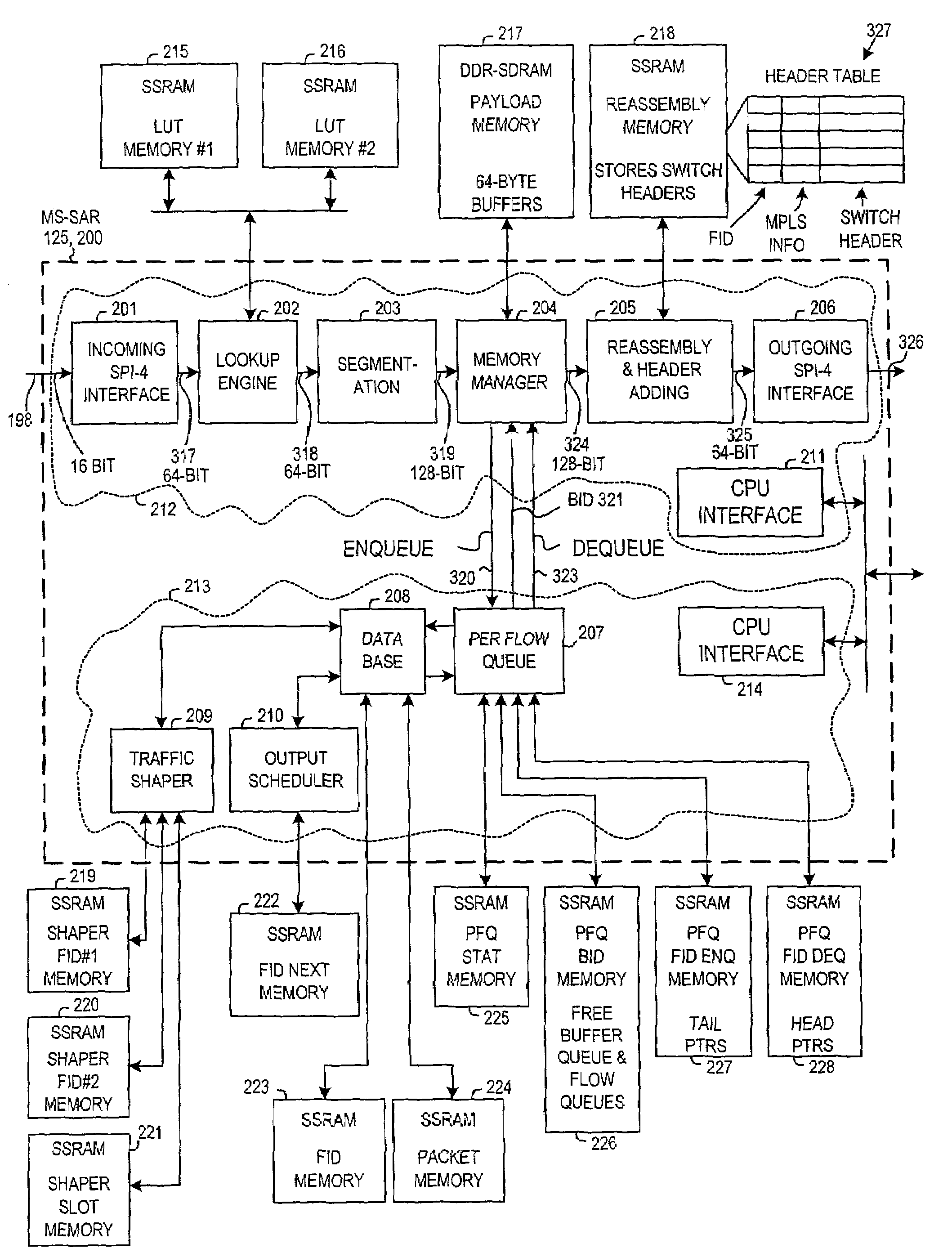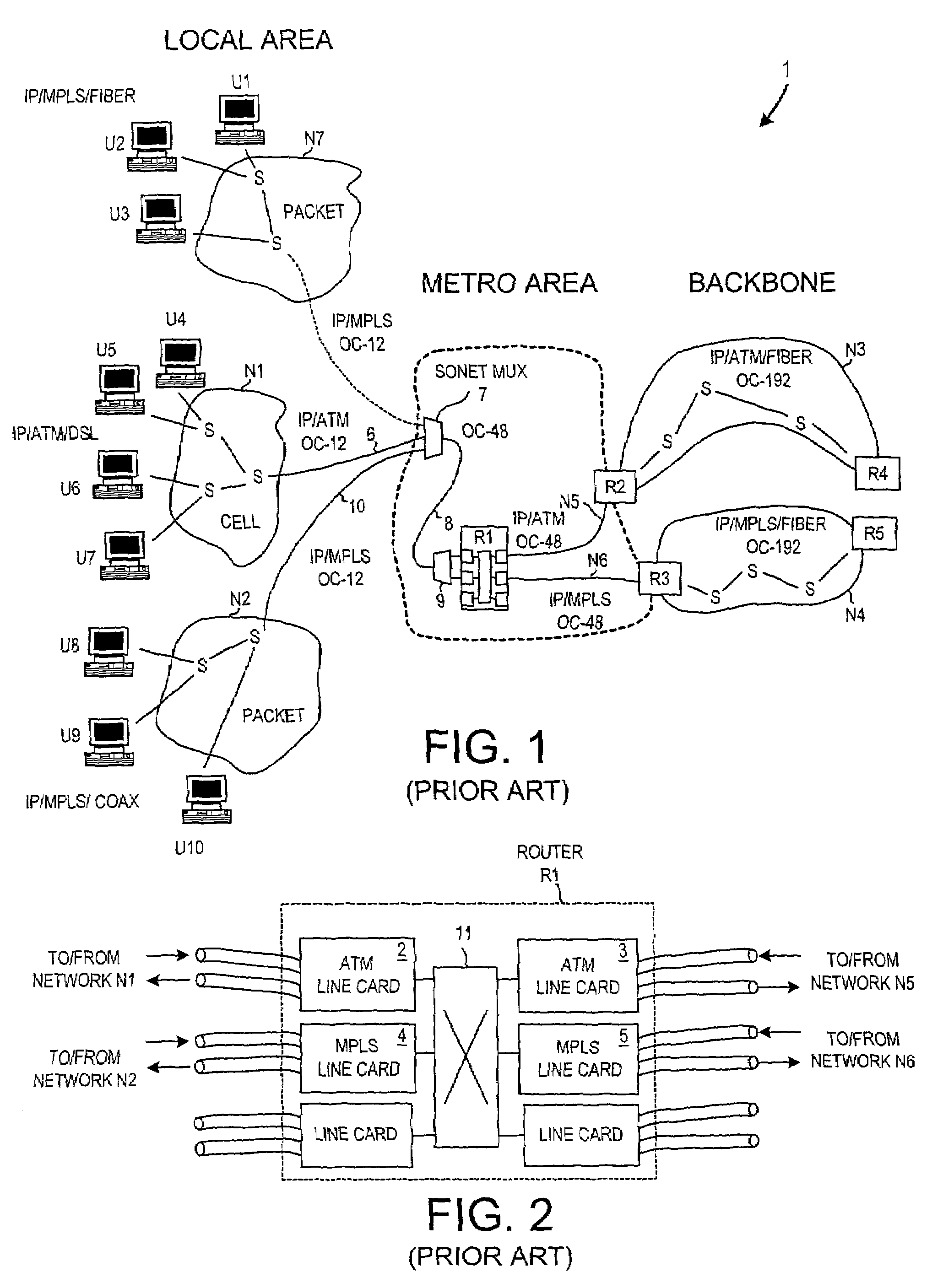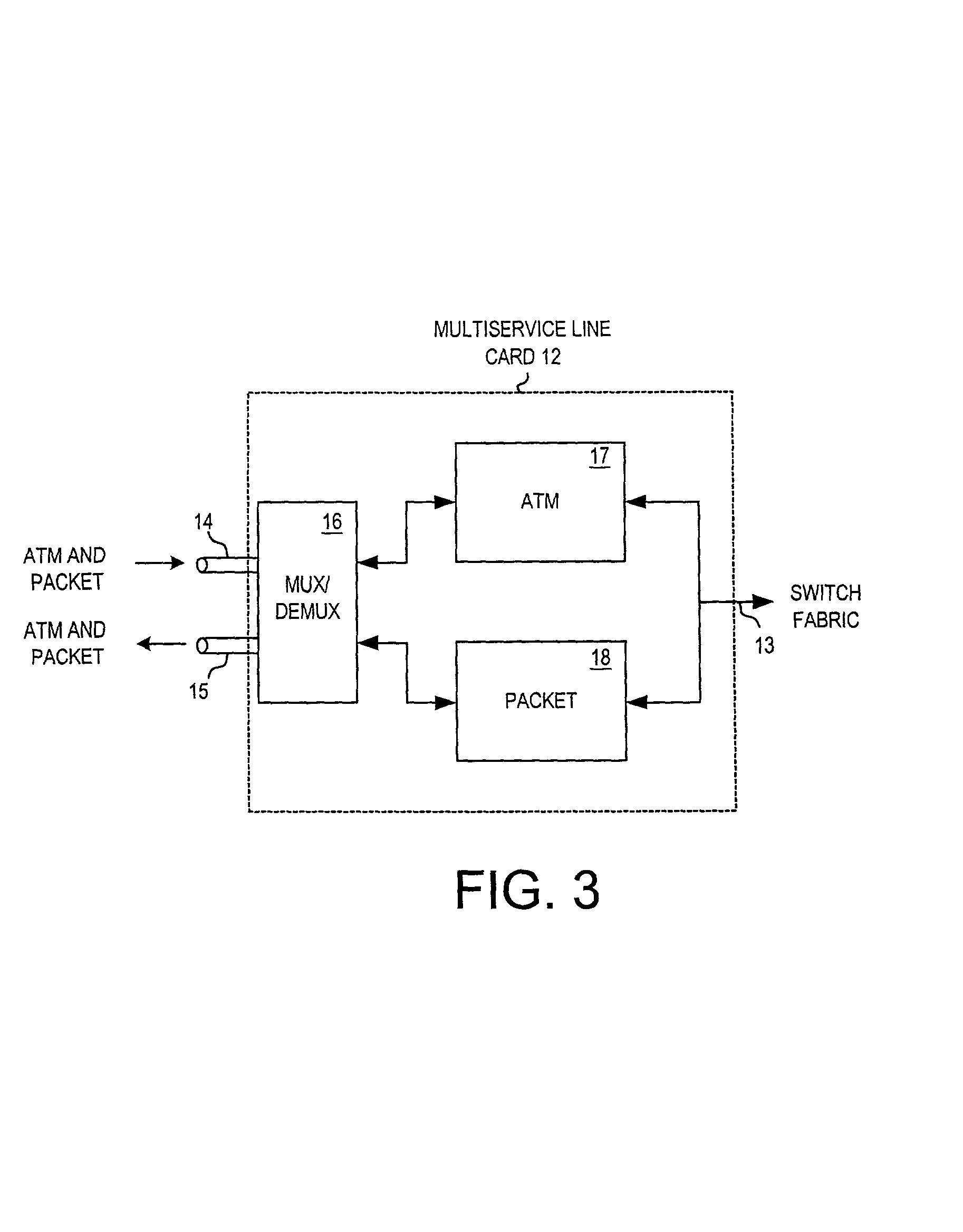Multi-service segmentation and reassembly device operable with either a cell-based or a packet-based switch fabric
a multi-service, switch fabric technology, applied in the direction of data switching networks, digital transmission, electrical equipment, etc., can solve the problems of inability to adapt to an mpls network, large cost, and general approach of fig. 3 involves substantial cost, so as to reduce the amount of memory needed, and reduce the number of reassembly contexts.
- Summary
- Abstract
- Description
- Claims
- Application Information
AI Technical Summary
Benefits of technology
Problems solved by technology
Method used
Image
Examples
Embodiment Construction
[0086]FIG. 4 is a simplified diagram of a router 100 in accordance with an embodiment of the present invention. Router 100 includes a plurality of line cards 101-104, a switch fabric 105 and a central processing unit (CPU) 106. The line cards 101-104 are coupled to switch fabric 105 by parallel buses 107-114. In the present example, each of parallel buses 107-114 is a 16-bit SPI-4, Phase II, LVDS parallel bus operating at 400 MHz at a double data rate (DDR). CPU 106 is coupled to line cards 101-104 by another parallel bus 131. In the present example, parallel bus 131 is a 32-bit PCI bus. In this example, each of the line cards can receive network communications in multiple formats. For example, line card 101 is coupled to a fiber optic cable 115 such that line card 101 can receive from cable 115 network communications at OC-192 rates in packets, ATM cells, and / or AAL5 cells. AAL5 cells are considered a type of ATM cell.
[0087]Line card 101 is also coupled to a fiber optic cable 116 s...
PUM
 Login to View More
Login to View More Abstract
Description
Claims
Application Information
 Login to View More
Login to View More - R&D
- Intellectual Property
- Life Sciences
- Materials
- Tech Scout
- Unparalleled Data Quality
- Higher Quality Content
- 60% Fewer Hallucinations
Browse by: Latest US Patents, China's latest patents, Technical Efficacy Thesaurus, Application Domain, Technology Topic, Popular Technical Reports.
© 2025 PatSnap. All rights reserved.Legal|Privacy policy|Modern Slavery Act Transparency Statement|Sitemap|About US| Contact US: help@patsnap.com



